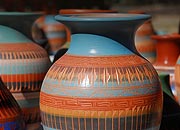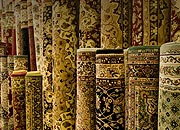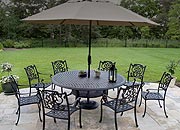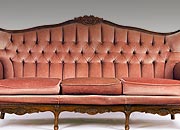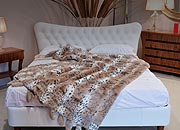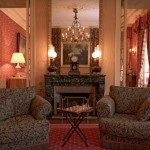 French provincial is a type of design that was created in the 17th and 18th century in France. Inspired by Louis 16th Marie Antoinette, this style sported simpler forms and refinement. In comparison, the previous decorating styles of Louis 14th who’s furnishings were heavy, huge, and made with magnificent grandeur and Louis 15th who’s style was over-ornamented and flamboyant the new French Provincial style was sedate. Although still considered elaborate compared to styles in other countries of the era, the delicate refinement of this design was, and still is, considered craftsmanship at its best.
French provincial is a type of design that was created in the 17th and 18th century in France. Inspired by Louis 16th Marie Antoinette, this style sported simpler forms and refinement. In comparison, the previous decorating styles of Louis 14th who’s furnishings were heavy, huge, and made with magnificent grandeur and Louis 15th who’s style was over-ornamented and flamboyant the new French Provincial style was sedate. Although still considered elaborate compared to styles in other countries of the era, the delicate refinement of this design was, and still is, considered craftsmanship at its best.
Still there was a significant difference between the furnishings of the elite compared to that of the masses. For those of means, major characteristics of this period’s furniture were the use of S-shaped curves, straight lines, and rectangular shapes juxtaposed against solid, thick flat surfaces often made of marble. Hand-carved panels depicting intricate, gentle designs or patina contained delicate detailing with gilded mounts and small moldings. Oak, walnut, fruitwoods, and mahogany were the timbers of choice, but occasionally satinwood was also used. This style eventually became known as French provincial.
For those of the bourgeois class, interior design was finally possible although in a more subdued style. Local tradesmen in provinces throughout France developed a new business creating furnishings which replicated that of the elite creating beautiful pieces which have stood the test of time. They combined style and practicability with elegance making finer living affordable for those who lived in the country. Determining that central focal points had to be established in each room, it was agreed that carved pieces such as buffets, hutches, sideboards, ladder-back chairs, and armoires, would serve as the foundation from which the design could be built.
Since the elegant furniture with its gentle curves, straight lines, rectangular shapes, and intricate detailing were to be predominant in the design theme, colors became subdued almost as if they had been sun-kissed but not faded. Floral designs, country scenes, Chinese chinoiserie, and motifs in varying styles, fabrics, and designs emerged as the perfect choice to compliment the furnishings. This style became known as French Country, but was based primarily on the French provincial design of the elite.
The best part is that this style is still very popular and extremely easy to achieve in today’s homes. By working with a few elements that are French inspired, which includes a great deal of variety, it’s easy to transform any room in the house into a French country estate.
- Select the focal points. Remember that in this style of design the furniture should be the focal point so select one or two pieces that you want to build around.
- The look is in the details. A variety of small items on a small table result in a big look. For example, tiny frames, vintage postcards, and beautiful little trinkets in an array of colors that might in found in a French farmhouse are perfect. Also include items that have French labels such as a candy tin or bottle of wine. It provides a quality of fun and yet reflects the charm of this style of décor.
- It’s all about the colors – In French provincial design there are no monochromatic color schemes. In fact, due to the vibrancy of the French countryside, the more colors the better. However, color shades are often muted as though they have been in the rain and sun awhile, although not faded or washed out. Sage green, cornflower blue, and ecru are all good choices. These are often combined with a more intense color palette that may include chocolate brown and brick red. Multiple colors not only work well together, but are also reflective of what are found cottages that dot the French countryside. Everything is covered in color from walls to accessories to furnishings so it gives one the permission to go crazy.
- Add eye-popping accents. Although colors are muted, it doesn’t mean they need to be boring. By selecting fabric that showcases colors in floral or French country scenes, the desired touch of French elegance can be achieved. Beads, pearls, ribbons, and lace also add a charming touch to pillows and draperies. Just framing a piece of fabric and using it as a wall hanging can provide that eye-popping embellishment one hopes for in their décor. Of course a painting of the French countryside, a water garden, or the cafes’ in a French town can really highlight the design you’re trying to achieve.
The French provincial style is broad enough to accommodate the tastes of just about everyone. Incorporating your own style into this design is easy just by adding pretty embellishment, unique detailing, and a love for the various facets found in the French countryside.
____________________________________________________________________________________________
iSearchDécor is the nation’s premier, free, online referral service for those seeking the perfect match to local home décor hidden gems stores and home service professionals. Exclusive savings are offered to the users of the iSearchDecor website. Visit us for all of your home decor needs at www.isearchdecor.com. Coming soon to Tucson, Dallas and Southern California.
Tags: design French Provincial
